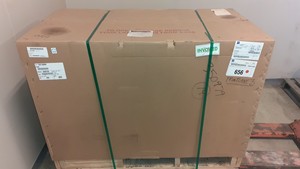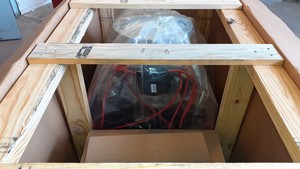(7398 products available)


































































































































































































LS1 Engine
This is the first of the Gen III V8 engines. It was initially used in the Chevrolet Corvette and has a capacity of 5.7 liters. The LS1 engine is popular among car enthusiasts because of its high power output and excellent reliability. The engine has a DOHC (dual overhead camshaft) design with 16 valves, and it is known for its high-revving capabilities.
LS2 Engine
The LS2 engine is a 6.0-liter V8 engine that was used in several GM vehicles, including the Pontiac G8, Holden VE Commodore, and Chevrolet Silverado. The LS2 engine is an upgrade from the LS1 engine and offers more power and torque. It has an aluminum engine block and a cast iron cylinder block, which makes it lightweight and suitable for high-performance applications.
LS3 Engine
The LS3 engine is a 6.2-liter V8 engine that was introduced in the Chevrolet Corvette. It is one of the most powerful engines in the LS family, with high specific power output. The LS3 engine uses advanced technologies such as the composite intake manifold and high-flow aluminum cylinder heads to achieve high power and torque. The LS3 engine is widely used in performance and racing applications.
LS4 Engine
The LS4 engine is a 5.3-liter V8 engine that was used in front-wheel-drive vehicles such as the Pontiac Grand Prix and Chevrolet Impala SS. The LS4 engine is unique because it is designed for front-wheel-drive applications. It has a transverse-mounted engine layout and a front-wheel drive compatible crankshaft.
LS5 Engine
The LS5 engine is a 396-cubic-inch V8 engine. It was used in the Chevrolet Corvette and other GM vehicles. The LS5 engine is part of the larger big block family and offers high torque and power output. It has a cast iron engine block and a steel crankshaft, which makes it suitable for heavy-duty applications.
LS6 Engine
The LS6 engine is a 5.7-liter V8 engine that was used in the Chevrolet Corvette Z06 and other high-performance GM vehicles. The LS6 engine is known for its high-revving capabilities and high power output. It has a DOHC design with 24 valves and uses lightweight materials such as aluminum and magnesium to reduce weight and improve performance.
LS7 Engine
The LS7 engine is a 7.0-liter V8 engine that is used in the Chevrolet Corvette Z06. It is one of the most powerful and high-revving engines in the LS family. The LS7 engine has a DOHC design with 32 valves and is known for its extreme performance and racing capabilities.
LS9 Engine
The LS9 engine is a 6.2-liter supercharged V8 engine that is used in the Chevrolet Corvette ZR1. It is the most powerful engine in the LS family, with extremely high power and torque output. The LS9 engine uses advanced technologies such as supercharging and intercooling to achieve its extreme performance.
LT1 Engine
The LT1 engine is a 6.2-liter V8 engine that is currently used in the latest GM vehicles, including the Chevrolet Camaro and Chevrolet Corvette. The LT1 engine is an upgrade from the LS engines and uses modern technologies such as direct fuel injection and variable valve timing to improve power and fuel efficiency.
Regular oil changes
Engine oil is the lifeblood of the LS3 engine. It lubricates internal components, reducing friction and wear. Over time, engine oil breaks down from heat and contaminants. This compromises its protective qualities. Changing the oil regularly - about every 7,500 miles or 6 months - ensures optimal engine protection. Use the recommended viscosity oil, like 5W-30, for variable climates. The new oil provides a fresh lubricating layer. It circulates quickly, minimizing dry starts. Fresh oil also suspends dirt, preventing buildup in critical areas. While some cars have oil life monitors, periodic changes are best. Driving habits, load, and conditions affect oil lifespan. Monitor the color and feel of the oil. Darkening or grit indicates it's time for a change. High-performance driving generates more heat and stress on the oil. Track conditions also strain the oil. Hot, humid weather requires more cooling. Off-road driving exposes cars to dirt and debris. Towing heavy loads puts extra strain on the engine. Ascend steep grades with limited airflow. These factors accelerate oil degradation. A regular change interval protects the LS3 under duress. Towing or hauling requires extra vigilance. The oil may need changing sooner than the standard mileage. Check the oil level and quality after tough tows or long trips.
Air filter replacement
The LS3's lungs are its air intake and filter. Clean, unrestricted airflow maximizes combustion efficiency. Over time, dirt and debris accumulate in the filter media. This restricts airflow, impacting engine performance. For optimal results, inspect the air filter every 15,000 miles. Replace it if it's noticeably dirty. Signs of a clogged filter include lower fuel efficiency, power loss, and check engine light. Short trips, stop-and-go driving, and dusty environments hasten filter contamination. High-mileage filters trap more particles but have a limited lifespan. Consider upgrading to a high-flow performance filter. These use synthetic or oil-impregnated media to boost filtration. They allow more air without excess dirt entry. A premium filter can enhance throttle response and power output. Carefully remove the old filter. Avoid dropping debris into the intake tube. Install the new filter per the LS3's service manual instructions.
Cooling system care
The LS3 generates immense power, so it needs a robust cooling system to prevent overheating. Coolant circulates through the engine, absorbing heat from combustion. It then flows to the radiator, where air passively cools it. Maintaining this balance is critical, especially in high-performance driving. LS3 owners should flush the entire cooling system every 50,000 miles. This removes accumulated rust, scale, and residue. Replace the coolant per the manufacturer's guidelines. Using the wrong type can damage components over time. Visual inspections are crucial for hoses, clamps, and the radiator. Look for cracks, bulges, leaks, and corrosion. Uneven wear or leaks indicate it's time to replace these parts. Don't ignore minor drips or dampness. A small leak can worsen and lead to catastrophic failure. Overheating from cooling failure can destroy the engine.
When retailing LS 3 engines, it is important to have a good understanding of their specifications and features in order to meet customer needs. Here are some factors to consider when choosing an LS 3 engine for resale.
Displacement
LS 3 engines have different displacement capacities. Displacement refers to the volume of the cylinders in the engine. It affects the power and efficiency of the engine. Larger displacement engines produce more power, while smaller ones have better fuel efficiency. The most common LS 3 engine sizes are 5.3L and 6.2L.
Power output
The power output of an LS 3 engine is determined by its size and the technology used. For example, supercharged or turbocharged engines will have higher power outputs. Customers looking for engines to enhance performance will opt for those with higher power outputs.
Fuel efficiency
As mentioned earlier, LS 3 engines that are smaller in size have better fuel efficiency. The engine design also contributes to fuel efficiency. For instance, some LS 3 engines have features such as variable valve timing that improve fuel efficiency.
Emissions
LS 3 engines are designed with technologies that reduce emissions to meet environmental standards. For instance, some engines have catalytic converters and exhaust gas recirculation systems. Customers who are environmentally conscious will prefer engines with low emissions.
Engine technology
Different LS 3 engines are manufactured using various engine technologies. For instance, some engines are V6 while others are V8. The V8 engines tend to be more powerful and efficient compared to the V6 engines.
Turbocharger
Some LS 3 engines contain turbochargers. The turbocharger uses the exhaust gases to spin a turbine and boost the airflow into the engine. This results in a lot of power without using a lot of fuel. Customers looking for engines with extra power will go for the turbocharged LS 3 engines.
Cooling system
The cooling system of an LS 3 engine is very important. It ensures that the engine does not overheat. Some LS 3 engines have advanced cooling systems such as high-flow water pumps and aluminum heat exchangers.
Gather Tools and Materials
Ensure to have everything needed for the project before starting. This includes LS3 engine replacement parts, engine hoist, jack stands, hydraulic jack, torque wrench, socket set, ratchet, combination wrenches, etc.
Prepare the Vehicle
Park the car on a flat surface and disconnect the battery. Raise the car with a jack and jack stands so the hoist can fit under.
Drain Fluids
Drain all fluids from the engine. This includes the oil and coolant. The oil should go into a container that is safe for hazardous waste. Follow local regulations for disposing of these fluids.
Remove the Engine
Start by removing the hood, air intake, exhaust system, starter, and electrical connections. Then, unbolt the engine from the transmission and use the engine hoist to lift it out of the vehicle.
Prepare the New Engine
Before installing, LS3 engine replacement parts should be assembled. Also, ensure that it is in line with the vehicle's specifications. When ready, put the new engine on the engine stand and attach the hoist.
Install the New Engine
Once ls3 engine replacement parts are installed, reconnect the cooling system, electrical systems, intake system, exhaust system, and hood. After this, refill the engine with oil and coolant.
Test the New Engine
Before driving, test the new engine to ensure it is working well. ls3 engine swap kits for the transmission and other components should be checked. When satisfied with the tests, lower the vehicle and disconnect the hoist and jack stands.
Q1: What cars have LS swaps?
A1: An LS swap can be performed on almost any car, truck, or motorcycle. However, the term ""LS swap"" is often used to refer to the conversion of older American muscle cars, such as Camaros, Mustangs, and Novas, to use an LS engine.
Q2: Does an LS swap add horsepower?
A2: An LS swap can add horsepower to a vehicle. Most LS engines produce more horsepower than older pushrod V8 engines. In addition, the added potential of an LS engine makes it easy to reach higher horsepower goals with bolt-on parts or an eventual nitrous setup.
Q3: How much does an LS swap cost?
A3: The cost of an LS swap varies depending on the vehicle make and model, the LS engine variant chosen, and the components used in the swap. A basic LS swap can be done for around $5,000 to $7,000, while a more complex swap can cost upwards of $10,000 or more.